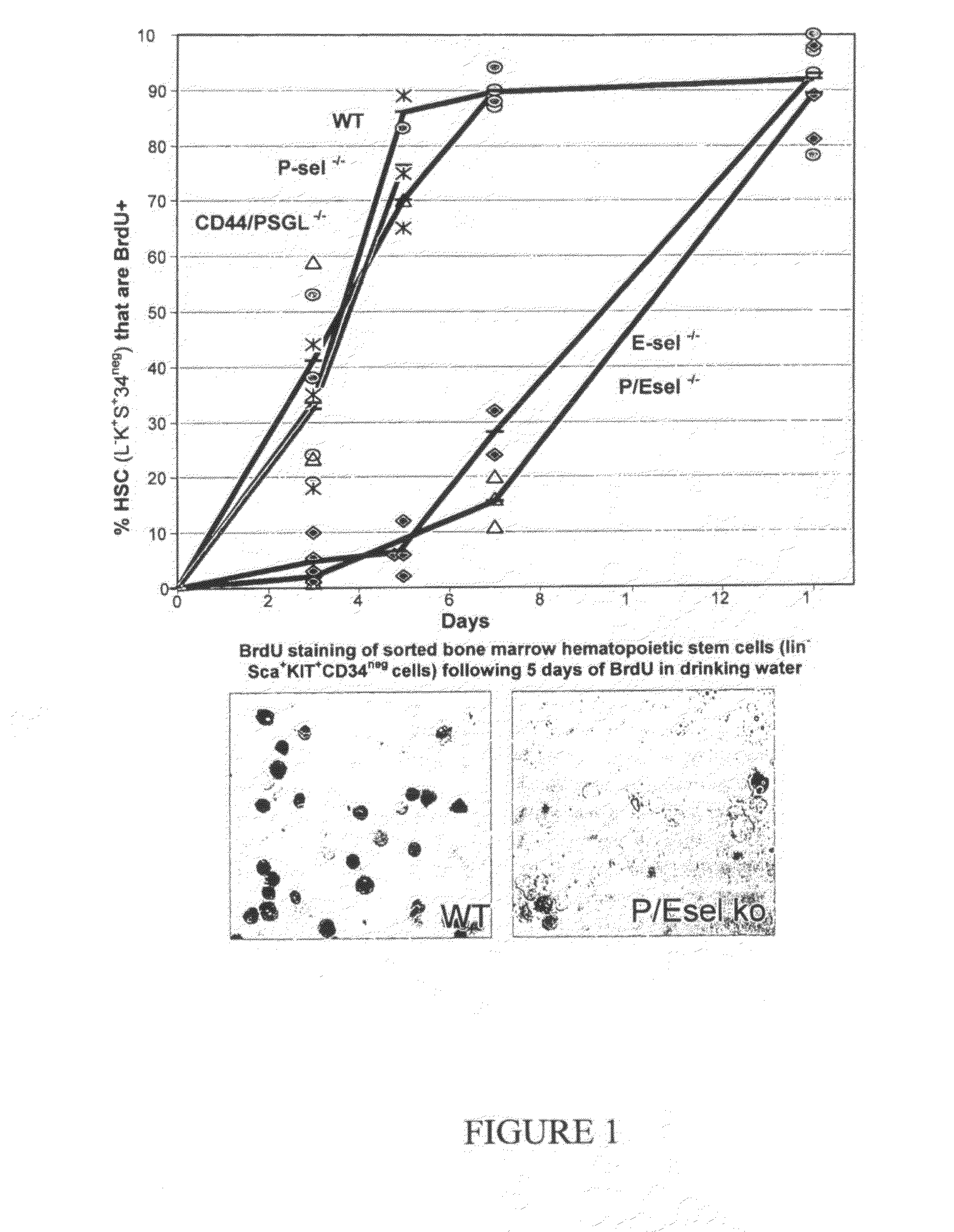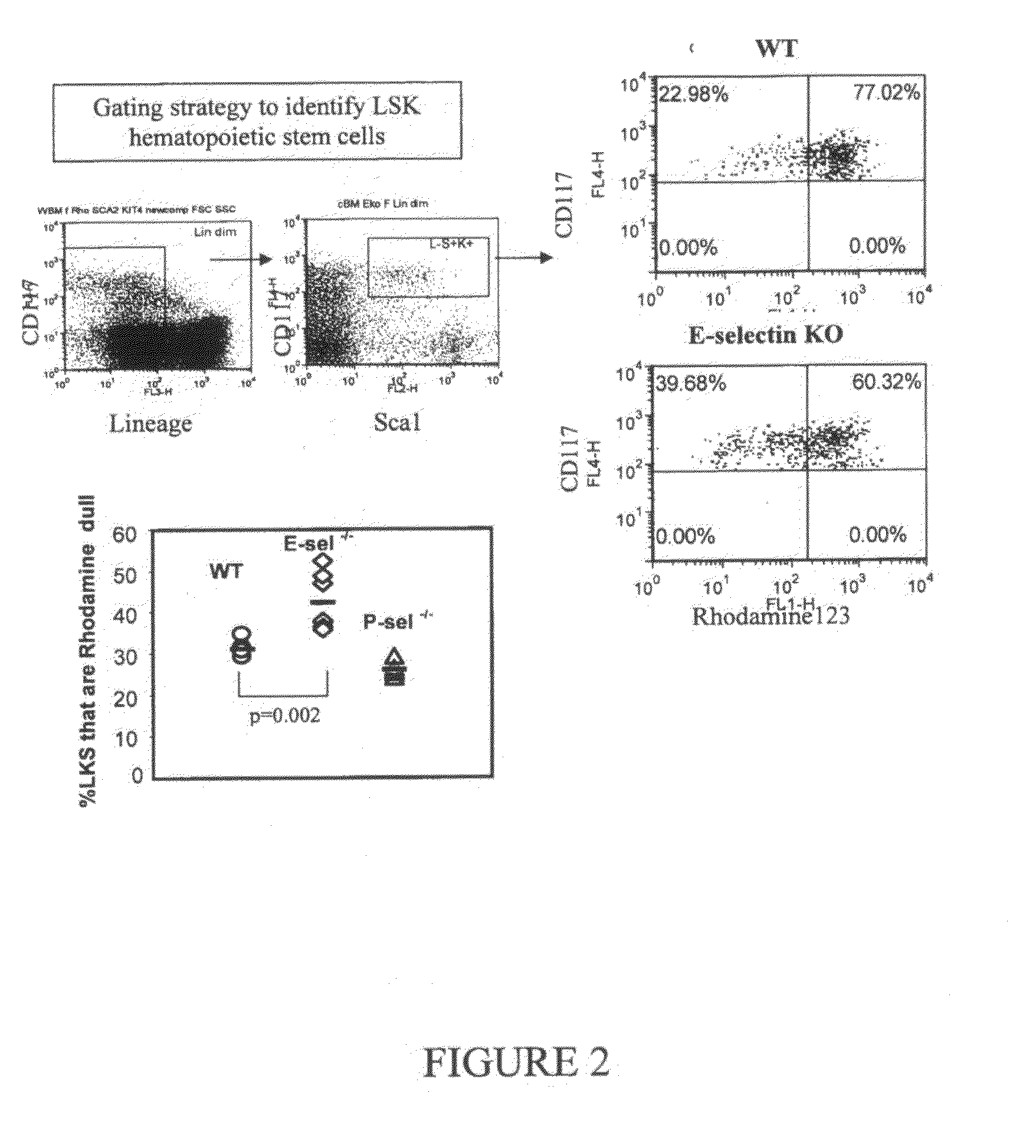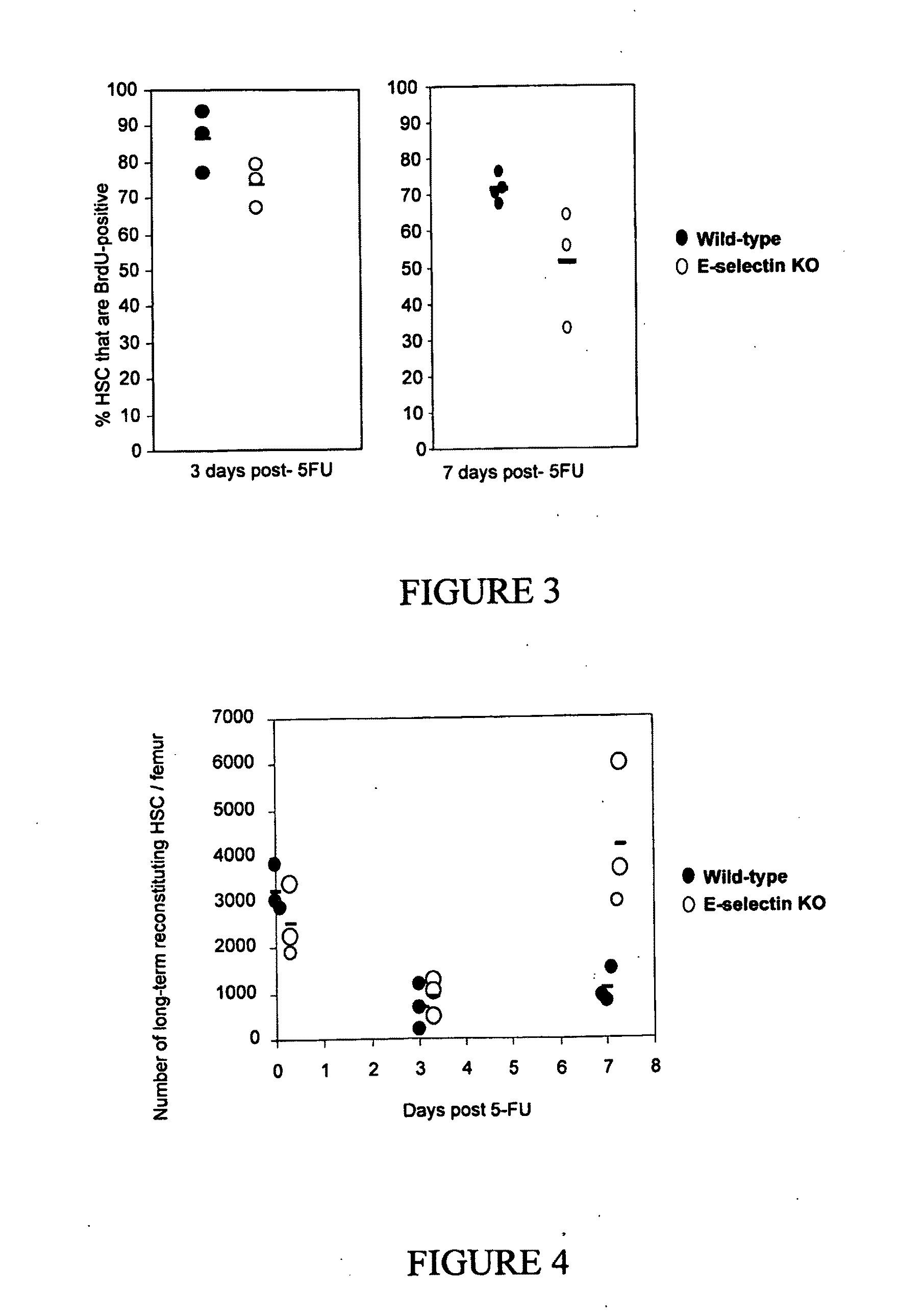Treatment and prophylaxis
a treatment and prophylaxis technology, applied in the field of treatment and prophylaxis, can solve the problems of increased rate of blood cell destruction or loss, limited proliferative capacity, and limited life span of mature functional end cells and their immediate precursors, and achieve the effect of stimulating or enhancing hematopoiesis and treating or preventing immunocompromised conditions
- Summary
- Abstract
- Description
- Claims
- Application Information
AI Technical Summary
Benefits of technology
Problems solved by technology
Method used
Image
Examples
example 1
Hematopoietic Stem Cell Turnover is Delayed 2.7-Fold In Vivo in the Bone Marrow of Mice Lacking the E-Selectin Gene
[0314]Using C57BL / 6 mice knocked-out for either or both the P- or E-selectin genes, it was shown that deletion of E-selectin, but not P-selectin, delays hematopoietic stem cell turn-over in the bone marrow in vivo. Mice were fed with BrdU in their drinking water for up to 14 days and sacrificed on days 3, 5, 7 and 14 to sort LSK34-hematopoietic stem cells. Following antibody staining with an anti-BrdU monoclonal antibody, 50% of LKS34-cells from the bone marrow of wild-type (WT) and P-sel− / − mice incorporated BrdU in 3.6 days whereas 50% of LKS34-cells from E-sel− / − and P / E-selectin double KO mice incorporated BrdU in 9.5 days (see FIG. 1). Thus, the cycling time of hematopoietic stem cell is 2.7 fold slower in the absence of E-selectin.
[0315]To determine whether this effect was mediated by the two previously identified E-selectin receptors PSGL-1 and CD44, BrdU incorpo...
example 2
In the Absence of E-Selectin, Bone Marrow Hematopoietic Stem Cells are Metabolically Less Active
[0316]To support findings on hematopoietic stem cell turnover with BrdU, lineage-negative Sca1-positive CD117-positive (LSK) hematopoietic stem cells were isolated from the bone marrow and stained with Rhodamine-123, a viable dye that binds to mitochondrial membranes and is retained by metabolically active respirating cells.
[0317]A higher proportion of LKS cells from E-selectin− / − mice were rhodamine dull (43±3%) compared to LKS cells from wild-type mice (30-12%; p=0.002) confirming that a greater proportion of hematopoietic stem cells from E-selectin knock-out mice are quiescent (FIG. 2).
[0318]To confirm that metabolically active Rhodamine123 dull cells cycle and incorporate BrdU less rapidly, Rhodamine bright and Rhodamine dull LKS cells were sorted from the same bone marrows as shown in FIG. 2. Rhodamine dull LKS cells incorporated BrdU 7 times less than Rhodamine bright LSK cells afte...
example 3
Hematopoietic Stem Cell Turnover is Lower in E-Selectin KO Mice Following Cytotoxic Insult with 5-Fluorouracil
[0322]To determine the effect of E-selectin gene deletion on hematopoietic stem cell recovery following cytotoxic stress, E-selectin KO and wild-type mice were injected with a single dose of 5-fluorouracil (5FU 150 mg / kg). As CD117 is strongly down-regulated in the bone marrow of 5FU-treated mice, the proportion of lineage-negative Sca1-positive CD41-negative CD48-negative CD150-positive long-term reconstituting hematopoietic stem cells6 that incorporate BrdU was measured. For this propose, mice were sacrificed prior to and at day 3 or day 7 following 5-FU injection and BrdU was given continuously through drinking water in the last 17 hours before sacrificed. BrdU incorporation remained significantly lower in hematopoietic stem cells from E-selectin knock-out mice on days 3 and 7 post-5FU suggesting that the observed decreased HSC turn-over in the absence of E-selectin may p...
PUM
| Property | Measurement | Unit |
|---|---|---|
| time | aaaaa | aaaaa |
| time | aaaaa | aaaaa |
| time | aaaaa | aaaaa |
Abstract
Description
Claims
Application Information
 Login to View More
Login to View More - R&D
- Intellectual Property
- Life Sciences
- Materials
- Tech Scout
- Unparalleled Data Quality
- Higher Quality Content
- 60% Fewer Hallucinations
Browse by: Latest US Patents, China's latest patents, Technical Efficacy Thesaurus, Application Domain, Technology Topic, Popular Technical Reports.
© 2025 PatSnap. All rights reserved.Legal|Privacy policy|Modern Slavery Act Transparency Statement|Sitemap|About US| Contact US: help@patsnap.com



